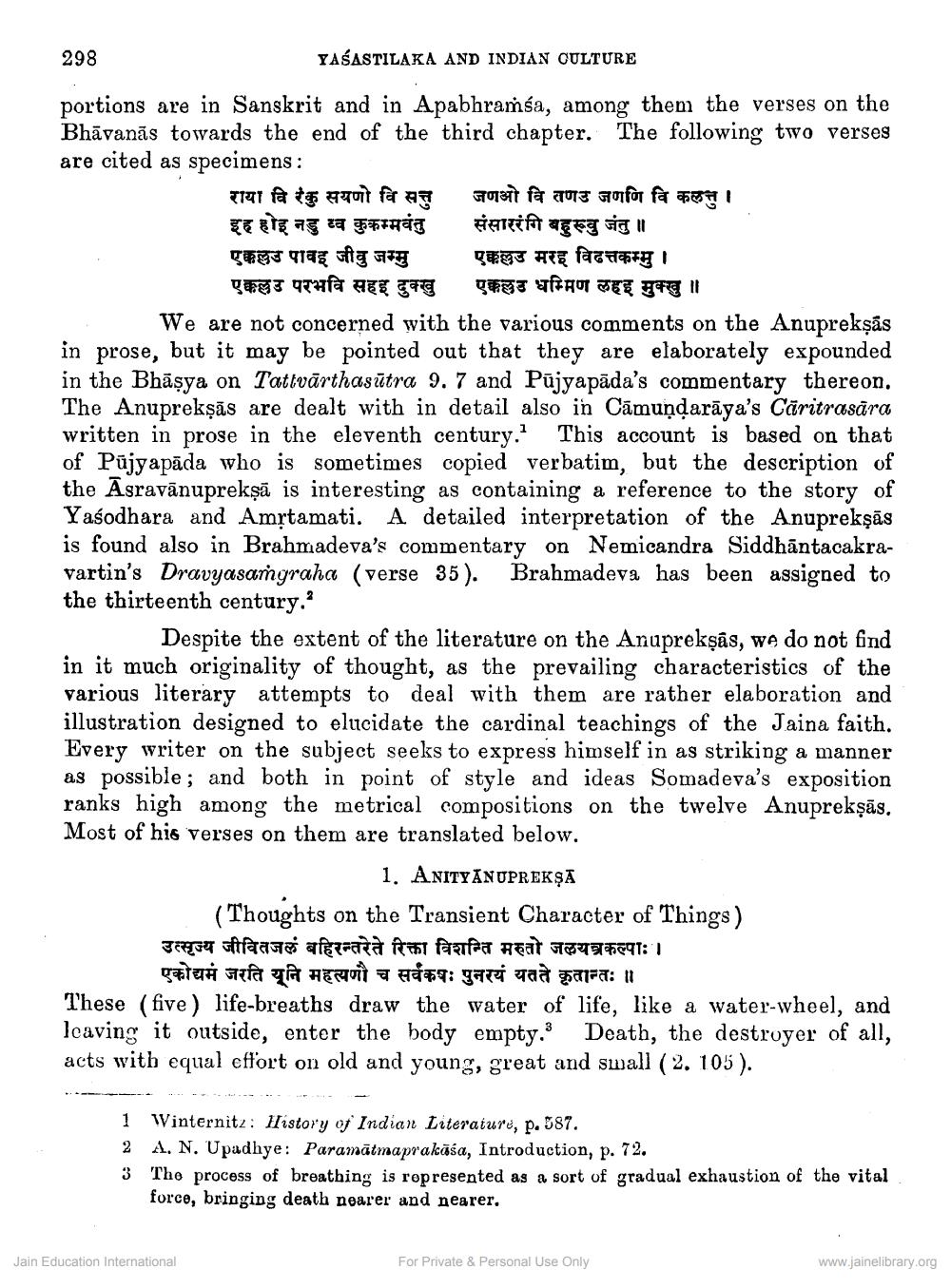________________
298
YAŠASTILAKA AND INDIAN CULTURE
portions are in Sanskrit and in Apabhramsa, among them the verses on the Bhāvanās towards the end of the third chapter. The following two verses are cited as specimens:
राया विरेकु सयणो वि सत्त जणओ वितणउ जणणि वि कलत्तु । इह होइनडु व कुकम्मवंतु संसाररंगि बहुरूवु जंतु ॥ एकल्लउ पावइ जीतु जम्मु एकल्लउ मरइ विढत्तकम्मु ।
एक्कल्लउ परभवि सहइ दुक्खु एकल्लउ धम्मिण लहइ मुक्खु ॥
We are not concerned with the various comments on the Anupreksās in prose, but it may be pointed out that they are elaborately expounded in the Bhāșya on Tattvārthasūtra 9. 7 and Pūjyapāda's commentary thereon. The Anuprekşās are dealt with in detail also in Cāmundarāya's Caritrasāra written in prose in the eleventh century. This account is based on that of Pūjyapāda who is sometimes copied verbatim, but the the Asravānuprekşā is interesting as containing a reference to the story of Yasodhara and Amstamati. A detailed interpretation of the Anuprekşās is found also in Brahmadeva's commentary on Nemicandra Siddhāntacakravartin's Dravyasangraha (verse 35). Brahmadeva has been assigned to the thirteenth century.
Despite the extent of the literature on the Anuprekşās, we do not find in it much originality of thought, as the prevailing characteristics of the various literary attempts to deal with them are rather elaboration and illustration designed to elucidate the cardinal teachings of the Jaina faith. Every writer on the subject seeks to express himself in as striking a manner as possible; and both in point of style and ideas Somadeva's exposition ranks high among the metrical compositions on the twelve Anupreksās, Most of his verses on them are translated below.
1. ANITYĀNUPREKŞA (Thoughts on the Transient Character of Things) उत्सृज्य जीवितजलं बहिरन्तरेते रिक्ता विशन्ति मरुतो जलयन्त्रकल्पाः।
एकोद्यमं जरति नि महत्यणौ च सर्वकषः पुनरयं यतते कृतान्तः ॥ These (five) life-breaths draw the water of life, like a water-wheel, and leaving it outside, enter the body empty. Death, the destroyer of all, acts with equal effort on old and young, great and small (2. 105).
1 Winternitz: History of Indian Literature, p. 587. 2 A. N. Upadhye: Paramātmaprakāśa, Introduction, p. 72. 3 The process of breathing is represented as a sort of gradual exhaustion of the vital
force, bringing death nearer and nearer,
Jain Education International
For Private & Personal Use Only
www.jainelibrary.org




